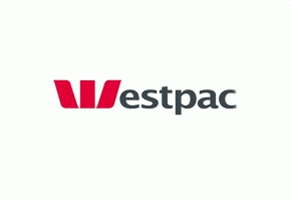
The latest data released for KiwiSaver performance as at March 31, 2013 is from Westpac. Our story covering the returns to December 31, 2012 can be found here.
Westpac continues to be one of the fastest growing scheme managers and this growth is achieved through the effective leveraging off their extensive banking network.
With over $1.87 bln under management in KiwiSaver ($1.7 bln as at December 2012), Westpac is the fourth largest scheme provider behind OnePath (ANZ), ASB and AMP (including AMP Wealth NZ).
This growth in funds is phenominal especially when you think they are not a default provider and have not acquired any other manager.
Consistent with other manager's returns the growth strategies which are heavily exposed to shares have outperformed the more fixed interest heavy conservative offerings.
Westpac's Capital Protected Investments actually performed best of all returning over 14.5% for the last 12-months. This investment series has been closed to new money for some time now but continues to be amongst Westpac's strongest performers.
The return on Westpac's Balanced Fund was marginally ahead of its internal benchmark but was comfortably ahead of many of its peers within in the Balanced category according to Morningstar's latest data.
On a five year basis there is very little difference between the returns of the Conservative Fund (5.8% p.a), the Balanced Fund (5.7% p.a.) and the Growth Fund (5.6% p.a.).
We have not come across any other manager who has such a tight spread between their Conservative and Growth strategies over a five year period.
The main contributors to the absolute returns during the past 12-months were the allocations to global and local equities. Westpac's fixed interest portfolio, and in particular their multi manager global fixed interest strategy, delivered positive returns above benchmark over the last 12-months.
Another contributing factor to the returns was the manager's tactical asset allocation and the positioning of the portfolios to benefit from the strong rally in riskier growth assets.
Westpac are mindful the near term outlook is uncertain and given the strong bull run in equities they have reduced allocations to growth assets within the diversified portfolios and are holding higher levels of cash.
This move should help cushion investors against sustaining substantial losses should markets pull back (as the manager is expecting) or decline sharply through some other unexpected event. If the markets play out as expected Westpac will be in a strong position to put their surplus cash to work and buy-up over sold assets or heavily discounted securities.
Westpac are maintaining an overweight allocation to hedge funds as an increase in market volatility provides opportunities for non conventional strategies.
The adoption of a clear alternative asset strategy which take take advantage of volatility in the market provides Westpac with a competitive advantage relative to many of their peers.
Following the recent departure of key staff Westpac have added Stephen Hong (formerly BNZ Investment Management, AXA and more recently AMP) as head of fixed interest. Hong brings extensive market and portfolio management experience to the Westpac team and is highly regarded within the industry.
Westpac's research capabilties will be increased with Hong's addition and they now boast one of the largest investment teams in New Zealand.
Below is a table of the longer term performance of the Westpac funds. The return data is before tax and after fees and is as published by the managers. (No adjustments have been made to take into account those additional fees which scheme providers may charge and which are not included in calculating the fund performance. We do make such adjustments, but they will not be included until the full benchmarking is published.)
|
Westpac KiwiSaver Scheme |
1 year (p.a.) |
5 year (p.a.) |
Since inception (1 Oct 2007) (p.a.) |
| Cash fund | 2.8% | 3.5% | 3.5% |
| Conservative fund | 8.8% | 5.8% | 4.8% |
| Balanced fund | 11.5% | 5.7% | 3.7% |
| Growth fund | 13.0% | 5.6% | 3.1% |
| Capital Protected 1 | 14.6% | n/a | 9.2% |
| Capital Protected 2 | 14.6% | n/a | 8.3% |
| Capital Protected 3 | 14.5% | n/a | 8.4% |
| Capital Protected 4 | 14.5% | n/a | 14.1% |
| Capital Protected 5 | n/a | n/a | n/a |
More detailed performance reporting can be found here ».
The table below outlines the assset allocation for each fund as at 31 March 2013.
|
Westpac KiwiSaver Scheme |
Cash (%) |
NZ Bonds (%) |
Global Bonds (%) |
Property (%) |
NZ & AU Shares (%) |
Global Shares (%) |
Alternative Assets (%) |
| Cash Fund | 100 | ||||||
| Conservative Fund | 24.1 | 23.1 | 25.0 | 5.1 | 10.2 | 10.1 | 2.5 |
| Balanced Fund | 6.0 | 15.2 | 16.0 | 5.0 | 20.3 | 29.9 | 7.5 |
| Growth Fund | 6.5 | 4.7 | 5.6 | 10.0 | 25.4 | 37.9 | 10.0 |
| Capital Protected 1 | 0.9 | 39.9 | 59.2 |
Note: due to rounding the numbers may not add up to 100%.
We welcome your comments below. If you are not already registered, please register to comment
Remember we welcome robust, respectful and insightful debate. We don't welcome abusive or defamatory comments and will de-register those repeatedly making such comments. Our current comment policy is here.